Disassembly: Artificial Intelligence VCR
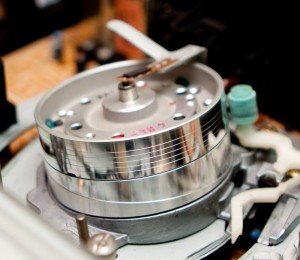 The 90s of the last century is a very unusual time, including in terms of equipment. See for yourself: in the 80s reel tape recorders and turntables were still actively used. In the 90s, "turntables" and "bobbiniki" massively went to the landfill, and instead of them, they took over musical centers and video recorders. In the "zero" cheap DVD-players and multi-channel acoustics have replaced the "Vidic". 10 years is a very short time, but if in the 95th year I was told that an expensive VCR with many functions would soon not cost anything at all, I would be very surprised.
The 90s of the last century is a very unusual time, including in terms of equipment. See for yourself: in the 80s reel tape recorders and turntables were still actively used. In the 90s, "turntables" and "bobbiniki" massively went to the landfill, and instead of them, they took over musical centers and video recorders. In the "zero" cheap DVD-players and multi-channel acoustics have replaced the "Vidic". 10 years is a very short time, but if in the 95th year I was told that an expensive VCR with many functions would soon not cost anything at all, I would be very surprised.However, I am glad that the VCRs are still found in the apartments of friends and acquaintances, which means that it is possible to disassemble another piece of iron and see how it works. And there is something to see there: the tape drive mechanism of the “Vidic” is much more complicated than that of conventional reel-to-reel tape recorders. At the mercy I was given away is not the most perfect, but the typical model of the late nineties - a video player with the recording function LG H102W.

')
To begin, let's define the classification. A poor relative in the VHS world was considered a simple video player, with no recording function. And the most perfect one is a video recorder that can record TV shows on its own, sometimes even according to a predetermined schedule. The strange verbal construction “writing video player” means something in between: on the one hand, a simple device without frills, on the other - a red button recording unnecessary video on top of even more unnecessary, is still there. LG H102W is such a model, but the front panel advertises completely different functions.
Let's try to decipher. “Hi-Fi” - this hints that the model is capable of recording and reproducing stereo sound. The instructions for the device, surprisingly found by me on the LG website , indicate the frequency range of 20-20 000 Hz for stereo mode, while for a monaural track of the usual format it is 100-10 000 Hz. According to Wikipedia , the sound quality of such systems in terms of signal-to-noise ratio is inferior only to compact discs. Go ahead. “Super Multi System” says that the VCR can play tapes recorded in both PAL and NTSC standards. The peculiarity of the latter is the higher speed of the tape. On the "European" four-hour video tape in NTSC format, you can record only 2 hours and 53 minutes of video. At one time I ran into this problem, trying to view videotapes brought from the United States. Fortunately, there was a VCR, which also supported both formats.
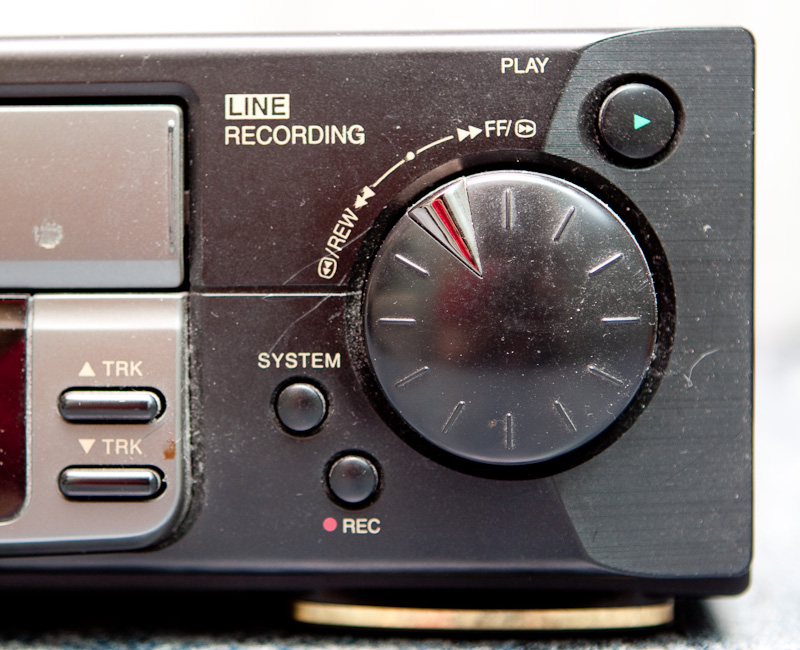
Closeup control buttons. Notice the two TRK buttons in the lower left. In any VCR, they were responsible for adjusting the position of the head to achieve maximum image quality. In the early video rental rented cassettes, copied it is not clear which copy at home. The quality of the image on such records ranged from just poor to terrible, and the “tracking” (manual or automatic) allowed at least getting rid of the strips at the top and bottom of the screen.
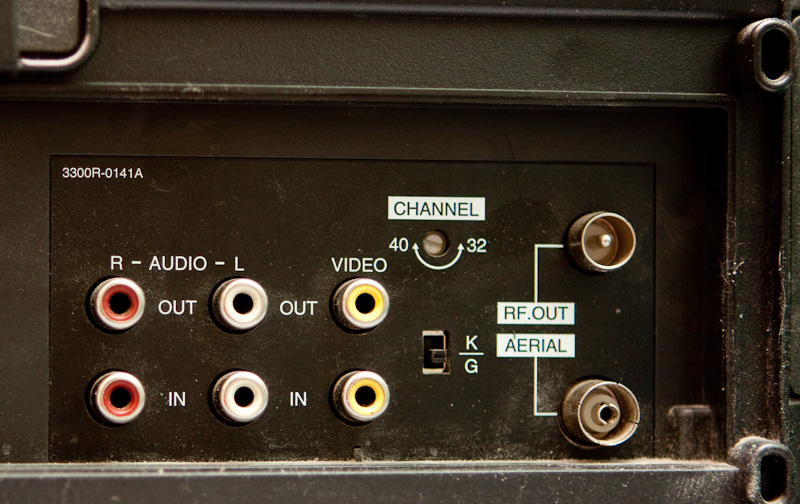
Connectors on the back. Two antenna connectors are provided for conveniently connecting a VCR to a TV. The antenna is connected to the lower connector, the TV itself is connected to the upper connector. As a result, when the video recorder is turned on, you watch the video from it, when turned off - the usual TV shows. Composite video output is also present, but the model is designed for connection to the simplest TVs, which are equipped with only an antenna input. Record TV programs directly from the antenna using the LG H102W can not, only through the line input.
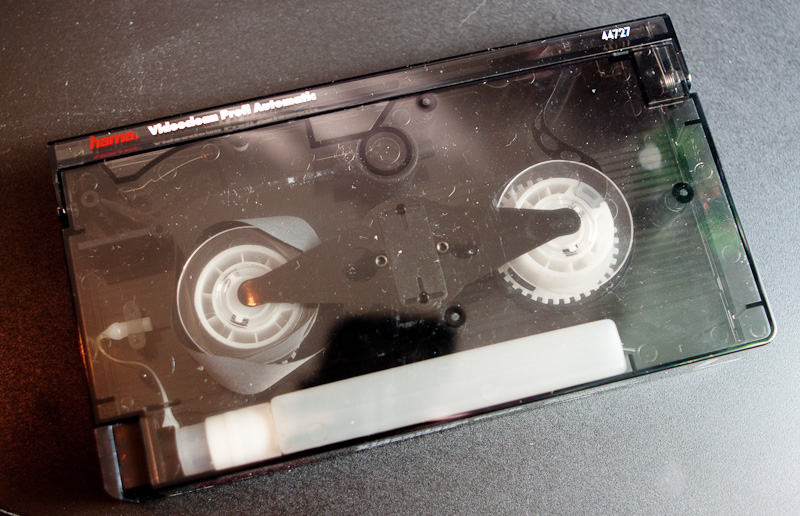
Before turning to disassembly, let's take a look at another artifact from the past. A cleaning video tape with an “endless” ribbon seems to be a useful accessory, but I personally have never used it. By the way, the LG VCR has an automatic head cleaning system.
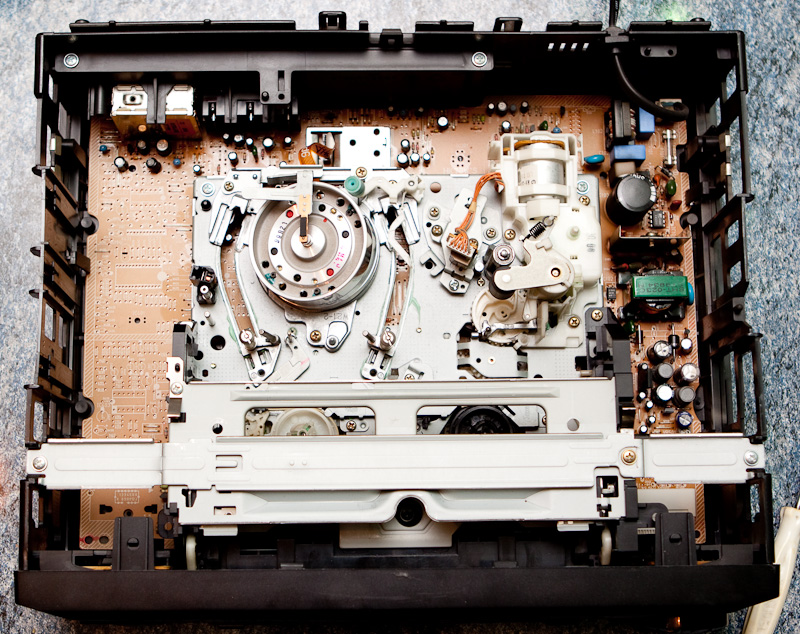
Top view with cover removed. Since the VCR is fully working, I did not disassemble it into separate parts, especially since all the insides are so clearly visible. Most of the internal space is a complex tape drive mechanism.
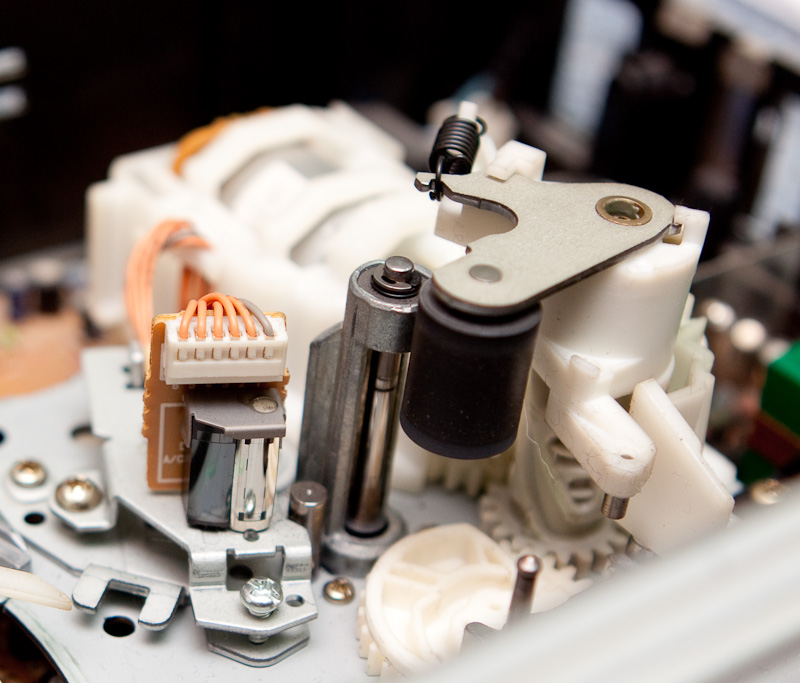
Pinch roller and separate head for the sound path. Judging by the information from Wikipedia, when recording high-quality stereo sound, the audio signal is mixed into the video signal, and is recorded by the main head. The magnetic head shown in the photo is then used as an auxiliary head.
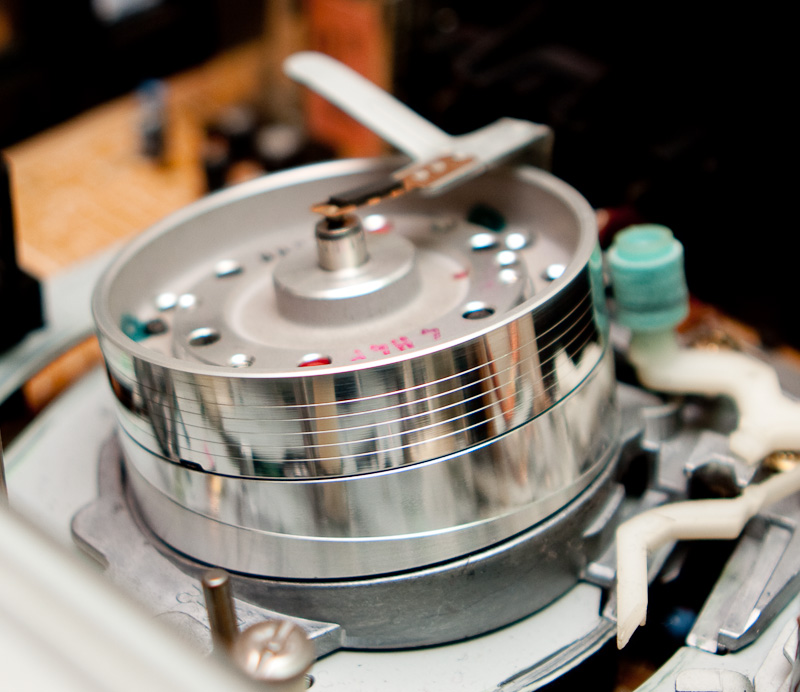
And here is the main “drum” with video heads. I hardly remember that the number of magnetic heads in the drum may differ, and the image quality depends on it. The presence of 6 video heads was considered a sign of a “good” VCR. And one manufacturer actively advertised "diamond" heads, capable of working almost forever. "Eternity", however, was not useful.
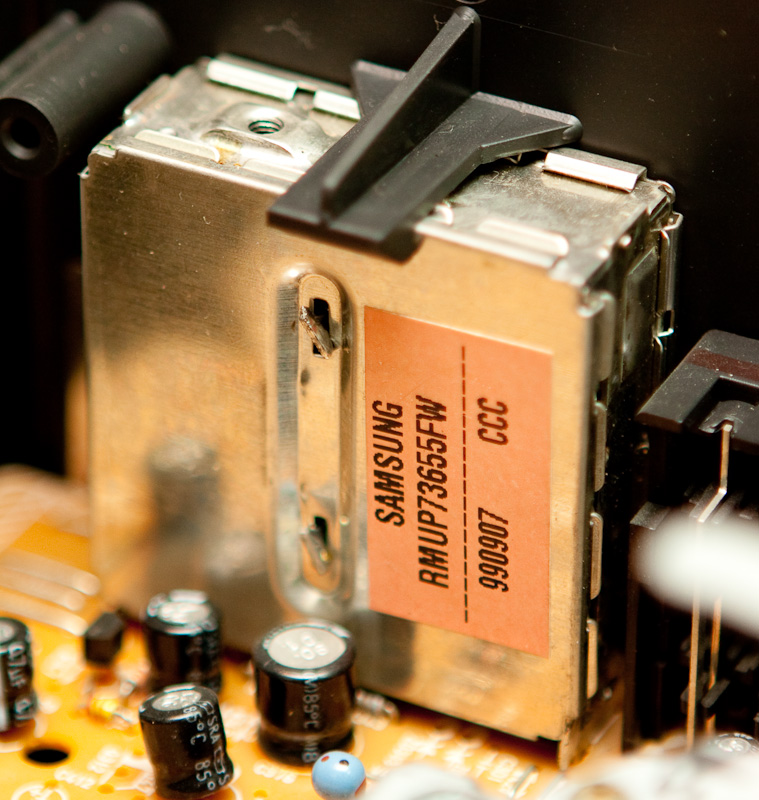
Suddenly , a part produced by a competitor is found in a LG video recorder: a Samsung radio module.
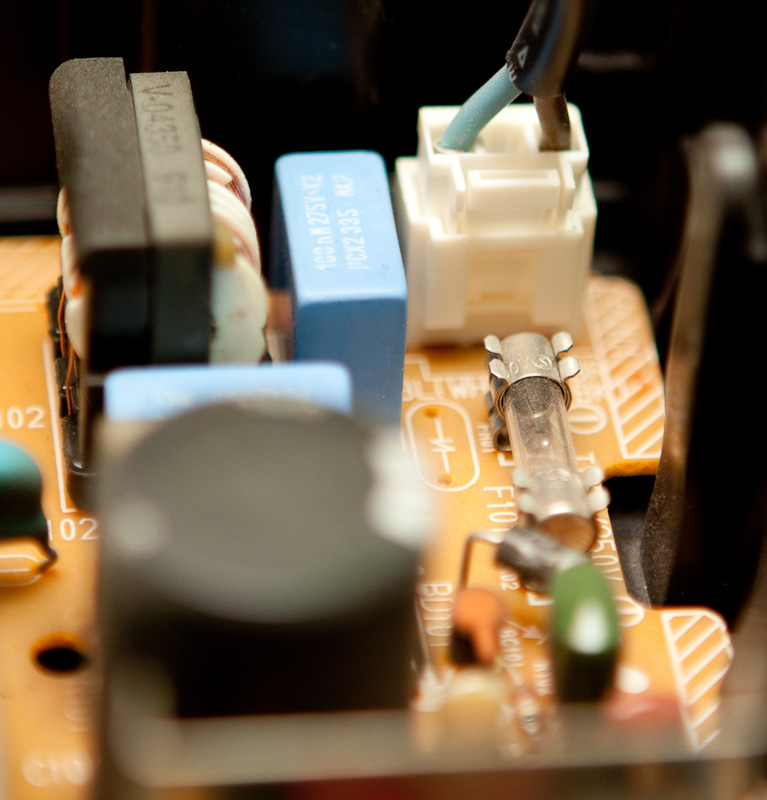
Batteries on board and fuse.

Circuits ...
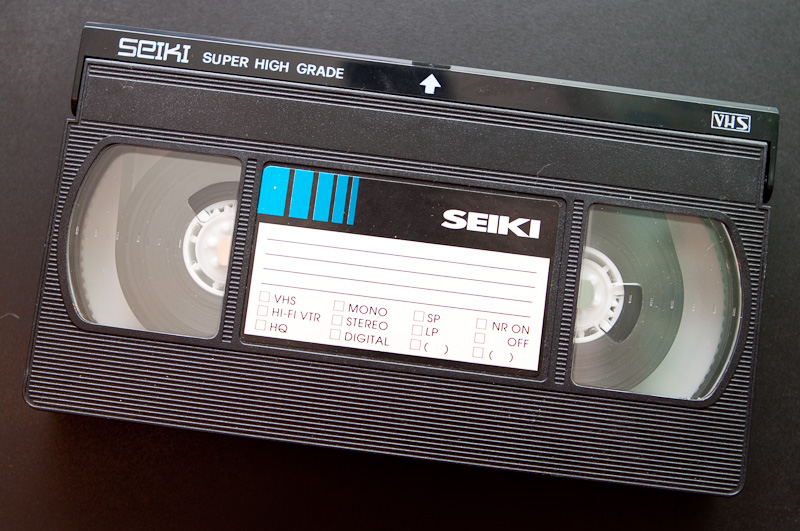
And in all its glory now obsolete media. By the way, how many people remember the domestic development called " Arvid "?
Finally, let me explain what it means to do with “artificial intelligence.” In the end, this is quite a primitive device, which does not even have its own display! And the thing is this: initially I wanted to record a video showing the process of loading and unloading a cassette. After removing the top cover, I found that the tape did not want to load, although before that everything worked fine! A friend who took part in the disassembly immediately suggested that "he is shy." I began to look for a contact that controls the top cover - well, what if the protection against a fool (that is, against me) was put?
It turned out that the girl was right. I found this experimentally by turning off the light in the room. In the dark, the tape recorder immediately loaded the tape and began to play the video without any problems. Shooting a video in the dark is impossible, and I still decided to find a photo sensor. On the video, it is noticeable that I close my fingers to the place where it is hidden under the tape drive mechanism. When I remove my hand, the tape recorder spits out the tape on its own, without pressing a button! What the sensor does exactly there and what is responsible, I did not understand. At the same time, you can evaluate how much easier it is to play video from the same DVD: no videos for you and many levers. Although, of course, much more power and knowledge is invested in digital video than in analog.
As usual, the video is best viewed at 720p.
Unlike vinyl, VHS left us forever. You can still argue about the advantages of analog and digital sound, but nobody (I hope!) Doubts the obvious advantage of DVD over VHS? Not to mention high-definition video and Blu-ray discs. The quality of modern video formats is so obvious that videotapes lose outright. But, by the way, there are fans of laser video disks that have not become any popular. After all, there, despite the similarities with the CD, the analog signal is recorded! However, this is a topic for a separate material.
Source: https://habr.com/ru/post/82211/
All Articles